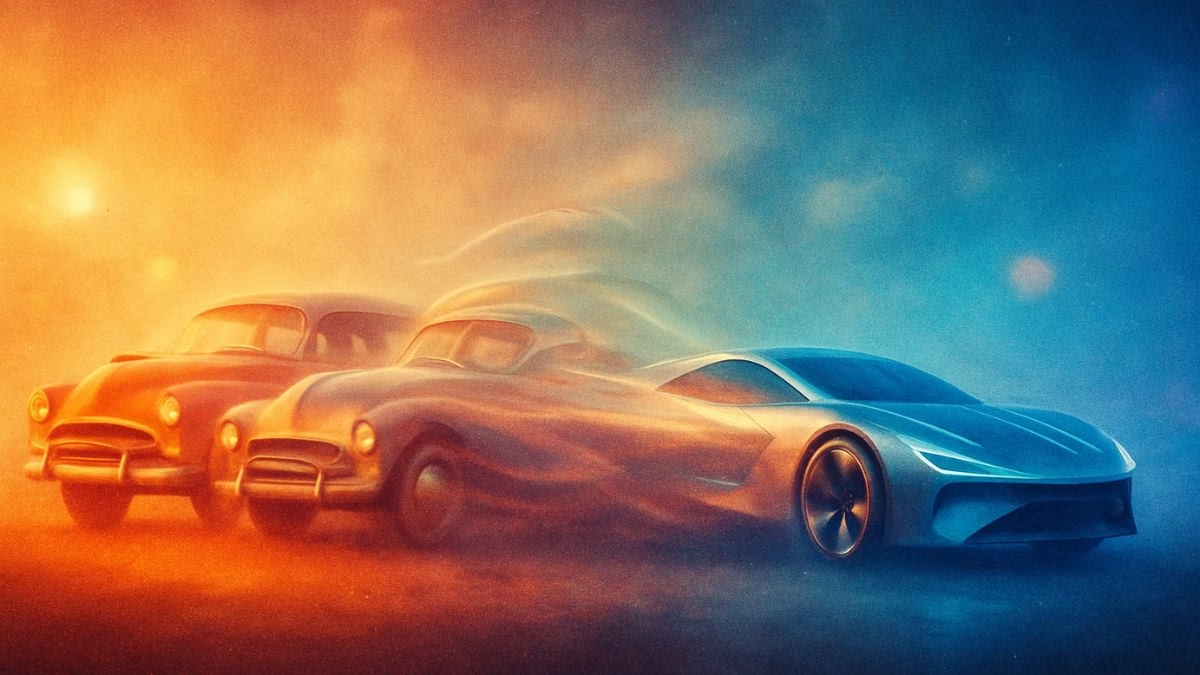Introduction
Get ready to start your engines for a journey through time! Have you ever looked at a modern car, with all its gadgets and sleek design, and wondered how we got here? What did the very first cars look like? Who were the brilliant, and sometimes eccentric, minds who dared to dream of a “horseless carriage”? This isn’t just a quiz; it’s a road trip through the fascinating history of the automobile. Each question is a pit stop, a chance to uncover a new story and a surprising fact about the incredible machines that reshaped our world. By the end, you won’t just know more about cars—you’ll have a new appreciation for the century of innovation that puts you in the driver’s seat today. Let’s begin!
Learning Quiz
This is a learning quiz from English Plus Podcast, in which, you will be able to learn from your mistakes as much as you will learn from the answers you get right because we have added feedback for every single option in the quiz, and to help you choose the right answer if you’re not sure, there are also hints for every single option for every question. So, there’s learning all around this quiz, you can hardly call it quiz anymore! It’s a learning quiz from English Plus Podcast.
Quiz Takeaways: Your Ride Through Automotive History
Hello and welcome! Today, we’re going to hit the road and take a journey through one of the most exciting and world-changing stories in human history: the evolution of the automobile. From a noisy, three-wheeled curiosity to the silent, self-driving electric vehicles of tomorrow, the car has done more than just get us from point A to point B; it has shaped our cities, our culture, and even our dreams.
So, where does our journey begin? We have to travel back to 1886 in Germany. While others had experimented with steam power, it was Karl Benz who created what we recognize as the first true car, the Benz Patent-Motorwagen. It was powered by a single-cylinder internal combustion engine—the technology that would dominate the next 130 years. It was a brilliant invention, but cars remained expensive toys for the wealthy. That is, until an American visionary named Henry Ford came along.
Ford’s great contribution wasn’t inventing the car, but reinventing how it was made. In 1913, he introduced the moving assembly line to his factory. By bringing the car to the worker, he cut production time for his Model T from over 12 hours to just over 90 minutes. This incredible efficiency made the Model T so affordable that the very people who built the cars could afford to buy them. This was the moment the automobile went from a luxury to a necessity, transforming America and the world.
As more people owned cars, design became more important. The boxy, utilitarian look of the early days gave way to the sleek, artistic shapes of the 1930s. Cars like the Chrysler Airflow were inspired by the Art Deco movement and the new science of aerodynamics, featuring teardrop shapes that looked like they were moving even when standing still. After World War II, this sense of style exploded. American cars of the 1950s became symbols of optimism and power, sprouting enormous, jet-inspired tailfins and gleaming with chrome.
But the party came to an abrupt halt in the 1970s. The 1973 Oil Crisis sent gas prices soaring and created huge shortages. Suddenly, those big, powerful cars were expensive liabilities. This crisis opened the door for Japanese automakers like Toyota and Honda, who had already perfected the art of building high-quality, reliable, and, most importantly, fuel-efficient small cars. This event forced a massive shift in the industry, with a new focus on efficiency that continues to this day.
Alongside the evolution of style and efficiency, there has been a constant quest to make cars safer. You might think of airbags first, but the single most important safety device ever created is the three-point seatbelt, introduced by a Volvo engineer in 1959. This was followed by innovations like crumple zones—parts of the car designed to absorb crash energy—and the Anti-lock Braking System, or ABS, which prevents skidding during hard braking and allows you to maintain steering control.
As the decades rolled on, new types of vehicles emerged to meet our changing lifestyles. In the 1980s, the minivan became the ultimate family vehicle. But in the 1990s, it was dethroned by a new king: the Sport Utility Vehicle, or SUV. The SUV offered the same practicality but with a more rugged and adventurous image, and it has dominated the market ever since.
Underneath the hood, the technology has been constantly evolving too. We’ve gone from simple engines to complex ones with names like “V8,” where the “V” simply describes the V-shaped arrangement of the cylinders. We’ve seen the invention of turbochargers, which use exhaust gases to force more air into the engine, creating more power from a smaller size. And we’ve seen the shift from manual transmissions, where the driver uses a clutch and stick shift, to sophisticated automatic transmissions that do all the work for us.
And that brings us to today, where we stand on the brink of the biggest revolution in a century. The internal combustion engine is finally meeting its match in the form of the Electric Vehicle, or EV. Powered by batteries and silent electric motors, EVs promise to reduce pollution and change our relationship with energy. At the same time, we’re developing self-driving technology that could one day make traffic accidents and traffic jams a thing of the past.
From Karl Benz’s three-wheeled carriage to the latest Tesla, the story of the automobile is a story of human ingenuity. It’s a tale of brilliant inventors, bold designers, and visionary business leaders. It’s a reflection of our history—our booms and busts, our wars and our moments of peace, our changing tastes and our evolving priorities. The next time you get in a car, take a moment to appreciate the incredible journey it took to get here. It’s been a long and amazing ride, and it’s far from over.










0 Comments